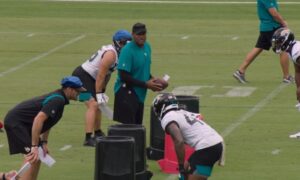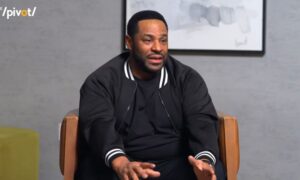Looking back over the past decade plus of Pittsburgh Steelers football, one of the common themes that has populated its success, even dominance, on the defensive side of the ball, was having a strong triangle up the middle that allowed the team to stop the run and force offenses to be one-dimensional.
The triangle, of course, is the interior defense consisting of the nose tackle in the 3-4 as well as the two inside linebackers. The Steelers were fortunate to have the likes of Casey Hampton, Chris Hoke, James Farrior, Larry Foote, and Lawrence Timmons consistently managing those positions for some time now.
But Hampton was not re-signed two years ago, turning the job over to Steve McLendon, and, more importantly, the Steelers have been mired in a revolving door at inside linebacker over the course of the past two seasons.
As we all should remember, Foote played his last season in Pittsburgh in 2013, and that campaign didn’t even last a full regular season game, as his year was ended going for a tackle on a running play on which he suffered a ruptured triceps muscle in his arm.
He was placed on injured reserve, and the Steelers were left to figure out where to go from there. That year, they had three young players as depth at the position in Kion Wilson and rookies Vince Williams (drafted in the sixth round) and Terence Garvin (undrafted).
Wilson got the starting nod for the next two games, but it was Williams seeing the majority of snaps anyway, until he was eventually put into the lineup. But rather than placing the burden on these players to make up for the loss of the veteran, the Steelers more often than not subbed out a linebacker for an extra defensive back.
Hoping to change things around, Pittsburgh used its first-round draft pick in 2014 on inside linebacker Ryan Shazier, whom they pegged as a plug-and-play starter, considering that’s where they put him in his first practice.
He began the season in that capacity, only being subbed out for a series or two, until he suffered an injury, after which he role was reduced upon his return.
Sean Spence, a third-year player who was finally healthy, was handed the starting position, and as the season wore on, he and Williams developed roles, with the latter playing primarily in sub-packages to strengthen the run defense.
By the end of the season, the Steelers were juggling three inside linebackers for one position—and occasionally moving Timmons around as a byproduct of that—which is not exactly conducive to stability and success.
It should be among their top priorities next season to find the clear frontrunner on the inside for the start of the next campaign. While Shazier may have been drafted to be that player, he can’t be forced into that role, and if he’s not ready, then he’s not ready. But it would be helpful to have one player see the significant majority of snaps in each game next season.








